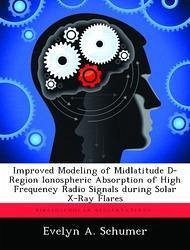
Evaluating the Correlation Characteristics of Arbitrary AM and FM Radio Signals for the Purpose of Navigation
Versandkostenfrei!
Versandfertig in über 4 Wochen
52,99 €
inkl. MwSt.
Weitere Ausgaben:

PAYBACK Punkte
26 °P sammeln!
The Global Positioning System (GPS) provides position estimates on Earth at anytime, anywhere and in any weather. However, GPS requires an unobstructed path to satellite signals. As such, GPS performance generally degrades or becomes non-existent in environments such as large urban areas. This research investigates and analyzes the correlation characteristics of arbitrary AM and FM radio signals for the purpose of navigation. The primary objective of this research is to determine if there is any potential for using AM and FM radio signals in a TDOA-type navigation system. In support of this ob...
The Global Positioning System (GPS) provides position estimates on Earth at anytime, anywhere and in any weather. However, GPS requires an unobstructed path to satellite signals. As such, GPS performance generally degrades or becomes non-existent in environments such as large urban areas. This research investigates and analyzes the correlation characteristics of arbitrary AM and FM radio signals for the purpose of navigation. The primary objective of this research is to determine if there is any potential for using AM and FM radio signals in a TDOA-type navigation system. In support of this objective, two correlation receiver methods are considered with a goal of producing autocorrelation peaks between the received signals of the reference and target receivers. With successful results, hopefully future work can be done with these correlation methods and TDOA navigation techniques. By using a reference signal with known characteristics (i.e., 31-Gold coded wave- form), the integrity of the designed system model is validated by comparing simulated and theoretical results.














